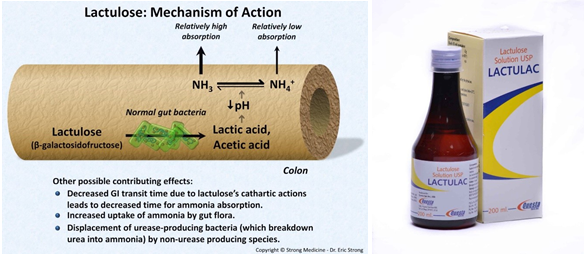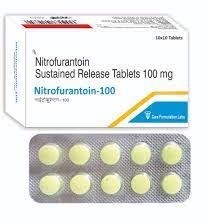A client with hepatic encephalopathy is receiving lactulose. Which assessment provides the nurse with the nest information to evaluate the client’s therapeutic response to the drug?
Fingerstick glucose.
Serum electrolytes and ammonia.
Stool color and character.
Serum hepatic enzymes.
The Correct Answer is B
Lactulose is a medication commonly used in the management of hepatic encephalopathy. It works by reducing the absorption of ammonia in the gut, which is a toxin that can accumulate in the blood in patients with liver dysfunction.
Monitoring serum electrolytes and ammonia levels can help the nurse evaluate the effectiveness of lactulose therapy. Elevated ammonia levels can indicate that the medication is not effectively reducing ammonia absorption and may require adjustment in dose or frequency. Additionally, monitoring electrolyte levels can help detect any imbalances that may occur because of lactulose therapy.
Fingerstick glucose levels (option A) are not relevant to evaluating the therapeutic response of lactulose in hepatic encephalopathy.
Stool color and character (option C) may be monitored to assess the side effects of lactulose, such as diarrhea, but are not the best assessments to evaluate therapeutic response.
Serum hepatic enzymes (option D) may be useful in assessing the severity of liver disease but are not the best assessment to evaluate the therapeutic response of lactulose in hepatic encephalopathy.

Nursing Test Bank
Naxlex Comprehensive Predictor Exams
Related Questions
Correct Answer is A
Explanation
Gentamicin sulfate is an aminoglycoside antibiotic that can cause ototoxicity, which is damage to the inner ear leading to hearing loss or balance problems. Therefore, a decrease in hearing is an indication that the client may be experiencing an adverse effect of gentamicin.
Option b, decreased blood urea nitrogen, is not an adverse effect of gentamicin, but it may indicate improvement in kidney function, which can be a positive outcome of treatment.
Option c, a white blood cell count of 6,000/mm3 (6x109/L), is within the normal range and is not necessarily an adverse effect of gentamicin.
Option d, photophobia, is not a common adverse effect of gentamicin and may indicate a different condition or medication effect.

Correct Answer is B
Explanation
Nitrofurantoin is an antibiotic commonly used to treat urinary tract infections. One of the adverse effects of nitrofurantoin is diarrhea, which may be severe and watery. Therefore, it is important for the home care nurse to inform the client that the diarrhea may be a side effect of the medication and requires further evaluation. The nurse should instruct the client to stop taking the medication and contact their healthcare provider for further assessment and treatment. The nurse should also assess the client's fluid and electrolyte status and monitor for signs of dehydration.
Option a is important to consider, but it does not address the potential adverse effect of the medication.
Option c may be appropriate in some cases, but it is not the priority intervention at this time.
Option d is not necessarily true and may cause unnecessary alarm to the client.

Whether you are a student looking to ace your exams or a practicing nurse seeking to enhance your expertise , our nursing education contents will empower you with the confidence and competence to make a difference in the lives of patients and become a respected leader in the healthcare field.
Visit Naxlex, invest in your future and unlock endless possibilities with our unparalleled nursing education contents today
Report Wrong Answer on the Current Question
Do you disagree with the answer? If yes, what is your expected answer? Explain.
Kindly be descriptive with the issue you are facing.
